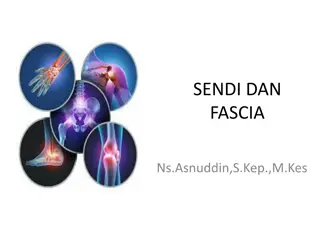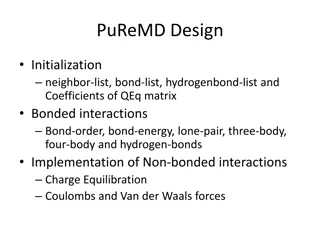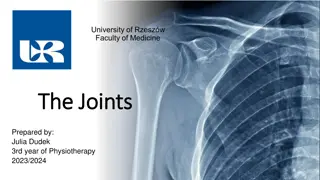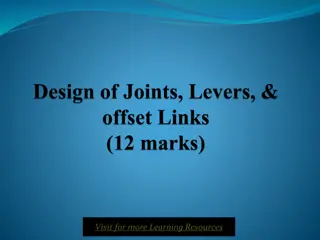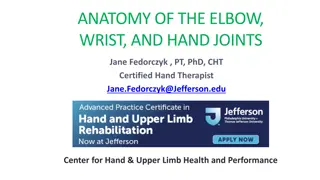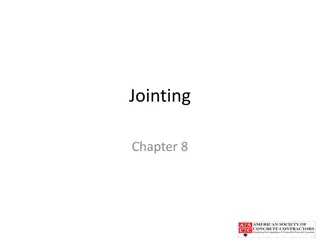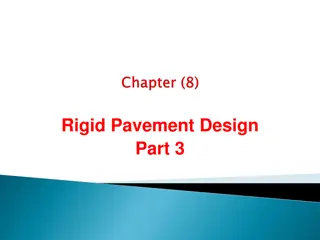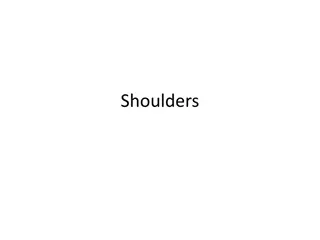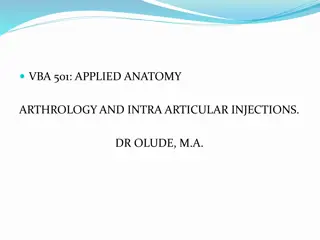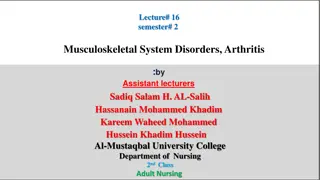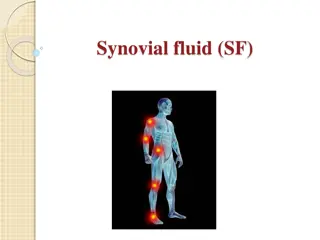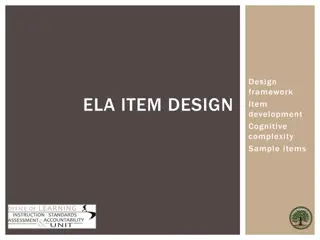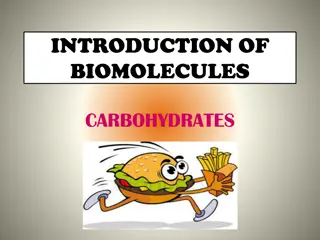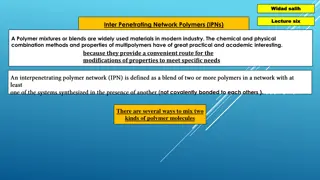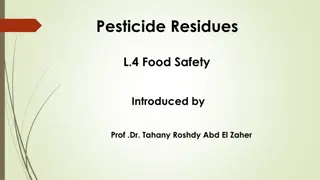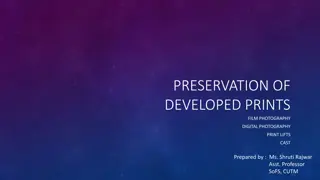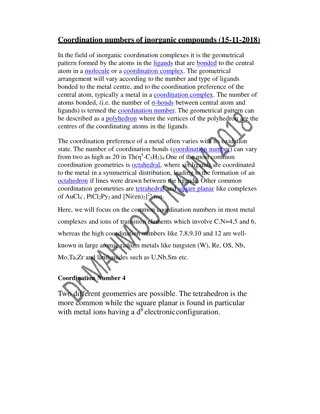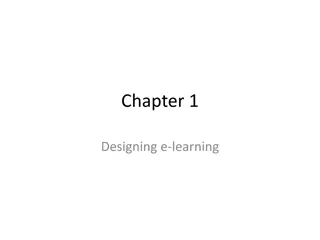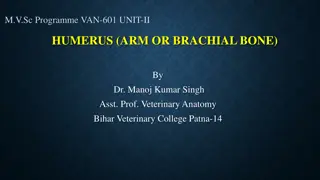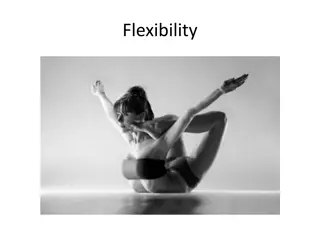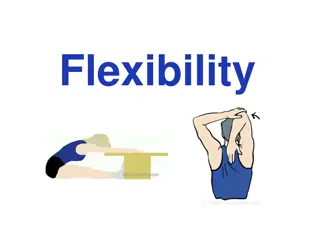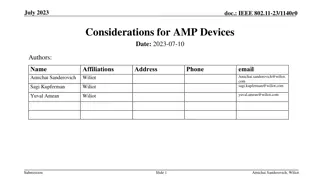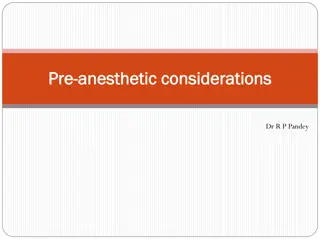Essential Considerations for Designing Bonded Joints
Explore the intricacies of bonded joints, from understanding the advantages of adhesive over mechanical joints to analyzing factors like creep, fatigue, and joint design. Learn about loading in shear, adhesive selection, stress distribution, and practical considerations for optimizing the performance of bonded joints.
Download Presentation

Please find below an Image/Link to download the presentation.
The content on the website is provided AS IS for your information and personal use only. It may not be sold, licensed, or shared on other websites without obtaining consent from the author. Download presentation by click this link. If you encounter any issues during the download, it is possible that the publisher has removed the file from their server.
E N D
Presentation Transcript
BONDED/MECHANICAL JOINT COMPARISON adhesion science - see Loctite, pgs 22 and 23 brainstorming exercise advantages of adhesive joints over mechanical joints advantages of mechanical joints over adhesive joints compare with list from Strong, pg 167
TYPES OF JOINTS joint designs see Loctite, pg 150 and 151
JOINT SHOULD BE LOADED IN SHEAR NOT IN PEEL shear stress distribution in adhesive (see Fig. 2, pg. 684, ASM Vol. 1) tapering edges will help eliminate stress risers under loading - reducing tendency to peel (especially in lap joints) influence of bonded lengths in flat lap joints (see Fig. 22.14, pg. 616, Lubin) performance of different joint types (see Figs. 22.9 and 22.10, pg. 614, Lubin)
CREEP continued strain at constant load dependent on joint configuration stress level type of adhesive orientation of adherends generalized characteristics of creep (old reference) brittle adhesives exhibit less creep than do ductile adhesives a reduction of 30% in either stress or operating temperature level increases creep durability 500 times
FATIGUE symmetrical bonded joints have higher fatigue endurance limits than unsymmetrical bonded joints generalized characteristics of fatigue resistance an increased depth of lap creates increased fatigue life adhesive fatigue life decreases slightly with increased thickness of adherends
DESIGN OF BONDED JOINT adhesive selection ability to withstand required stresses ability to withstand in-service environmental conditions practicality of the application process mode of surface preparation restriction on handling prepared surfaces before bonding method of mixing and applying adhesive to joint fixturing necessary for support of joint during bonding method of cleaning joint after bonding types of adhesive (see Table 1, pg. 684, ASM Vol. 1) analysis of joint to determine area of bond
BONDED JOINT PROCESS dry fit and/or imprint prepare surfaces apply adhesive maintain thickness of bond (from Strong: 0.004 in. - 0.008 in., from Hercules: 0.005 in. - 0.015 in.) to maintain bondline thickness use bond wires, glass beads, or scrim cloth place in a locating/bonding fixture compact to remove entrapped air clean up cure
PREPARATION OF COMPOSITE ADHEREND surface must be free of grease and other contaminants (i.e. mold release agent) wipe with solvent or vapor degreasing rinse with water or alkaline solution (to remove solvents) abrade surface with sandpaper (or Scotchbrite) wipe again with solvent rinse with water (dry in oven if rinsed with water) peel ply may be used to eliminate sanding water break test to ensure proper surface preparation
PREPARATION OF METAL ADHEREND aluminum - phosphoric acid anodizing (PAA) followed by primer titanium - phosphate fluoride or some anodizing method any metal which forms surface oxide should be carefully treated to achieve stable surface
BONDING OF THERMOPLASTICS materials can be welded (fusion bonded) rather than adhesively bonded welding process conventional heating, ultrasonic heating, friction heating and induction heating (requires metal screen - susceptor) clean surfaces with solvent and/or water and detergent heat surfaces to point of incipient melting press surfaces together




